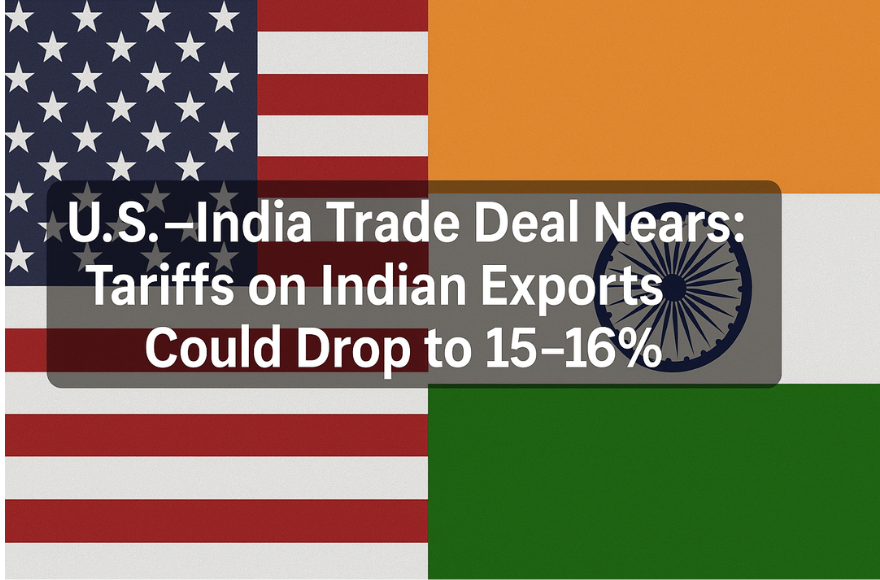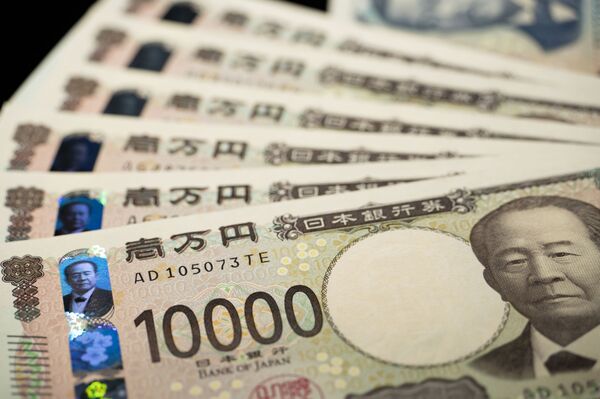
The recent report in Mint that the United States may cut tariffs on Indian goods to around 15–16% as part of a bilateral trade agreement has stirred significant interest. According to sources cited, the current U.S. tariff on many Indian exports is as high as 50%.
In what can be described as one of the most consequential shifts in the United States-India trade relationship in recent years, this development could unlock new opportunities for Indian exporters, reshape sectors like agriculture and energy, and reset the trajectory of U.S.-India economic relations.
Below we dig deeper into the significance of this development, the mechanics behind it, its potential impact, and the areas to watch.
The United States has long been a major trading partner for India. Exports from India to the U.S. have grown steadily over decades, and despite occasional frictions over market access, tariffs, and non-tariff barriers, the two countries have maintained a broad, if uneven, trade partnership.
In recent years, the trade landscape has been complicated by geopolitics, strategic competition (especially involving China), and energy policy. For example:
India has imported a sizeable share of its crude oil from Russia (about 34% according to reports) which has had implications for its relationship with the U.S. given Washington’s stance on Russian energy.
The U.S. has imposed tariffs and trade penalties tied to India’s energy sourcing, among other things.
India has sought greater market access for its exports (textiles, engineering goods, pharmaceuticals), while the U.S. has wanted more access to Indian agriculture, services and market reforms.
According to the Mint report, the proposed agreement – often referred to as a bilateral trade agreement (BTA) between the U.S. and India – would include a tariff cut by the U.S. on Indian goods to ~15-16% (from around 50%), in return for India making certain concessions, especially in the energy and agriculture arenas.
India may gradually reduce its imports of Russian crude oil, aligning more with U.S. preferences.
India may allow increased imports of non-genetically modified (non-GM) U.S. corn and soymeal.
The deal may include a mechanism for reviewing tariffs and market access periodically.
Timing: The agreement could be announced at the upcoming ASEAN summit where Narendra Modi and Donald Trump may meet.
Thus, the backdrop is a pragmatic trade deal driven by strategic and economic interests on both sides.
Improved Competitiveness: A reduction from ~50% to ~15-16% U.S. tariffs means Indian goods will become significantly more price-competitive in the U.S. market. That’s a big deal for labour-intensive sectors (textiles, apparel), engineering goods, pharmaceuticals, jewellery etc.
Export Growth Potential: With easier access into the U.S., India could see a boost in export volumes and value. The U.S. remains one of India’s largest markets.
Diversification Opportunity: Indian exporters could diversify more into the U.S., lessening dependence on other markets.
Higher Value-Added Movement: With improved access, Indian exporters may invest more in higher value-added goods rather than commoditised goods to leverage the tariff advantage.
Access to Indian Market: In return for tariff relief to India, the U.S. secures greater access for its agriculture (corn, soymeal) and energy exports into India.
Supply-chain Resilience: The U.S., facing supply-chain pressures and strategic competition (e.g., with China), sees India as a reliable partner.
Strategic Alignment: On energy (reducing Russian oil dependence) and agriculture, the deal helps align Indian behaviour with U.S. strategic interests.
This trade deal could mark a new chapter in the India-U.S. trade partnership, shifting from episodic friction to structured engagement.
It could signal deeper economic integration, joint value-chains, and potentially pave the way for broader trade frameworks (though not a full free trade agreement yet).
It helps India in its ambition to scale up exports globally, especially to premium markets.
For the U.S., it strengthens a key partnership in South Asia, with geopolitical benefits.
Some analysts may wonder: Why isn’t the U.S. cutting tariffs more aggressively (say to single digits) or going for a full free trade agreement? Several reasons:
The U.S. still wants to maintain some protection for domestic industries, so a 15-16% level is a compromise.
India’s strategic autonomy and energy sourcing (e.g., from Russia) complicate full liberalisation; hence the phased approach.
Sensitive sectors (agriculture, dairy, services) may still be off the table for now, so the tariff reduction is more about goods broadly.
The mechanism for periodic review allows flexibility to adjust the terms based on market conditions.
Thus 15-16% appears as an interim, pragmatic figure — not full liberalisation, but a meaningful step.
Energy has emerged as a key card in this deal. India’s crude imports from Russia (~34%) have been under the spotlight. The reported deal suggests India will gradually reduce Russian oil imports, while the U.S. may provide greater access to its crude and gas exports.
For India, this means: more diversification of energy sources, potentially higher cost, but strategic benefits. For the U.S., this means an export channel and geopolitical leverage.
The U.S. side is particularly keen on agricultural access in India. Reports suggest India may permit greater imports of non-GM U.S. corn and soymeal, which could ease the way for the deal.
However, this also raises domestic concerns in India: such imports may impact local farmers and processors. These domestic sensitivities will influence how the deal rolls out.
Indian sectors like textiles, engineering goods, leather, jewellery, pharmaceuticals stand to benefit from lower tariffs. With tariff relief, their cost structure for the U.S. market improves. The deal might help India ramp up exports to the U.S., especially as U.S. supply chains look beyond China.
Implementation and Details: The deal is reportedly still in negotiations. Final terms, timelines, and specific product/sector carve-outs still need to be cleared.
Domestic Pushback: In India, certain sectors (agriculture, dairy) may resist increased U.S. imports. Local industry may question how they are being protected.
Energy Price & Supply Risk: If India diversifies away from Russian oil to the U.S., cost and supply may change. That could have broader inflationary or energy security implications.
Geopolitical Shift: The deal includes energy and strategic dimensions; it may be interpreted in the context of U.S.–China rivalry, complicating India’s balancing act.
Tariff Review Mechanism: With a review mechanism built in, future changes to terms may occur — uncertainty remains for exporters planning long term.
Timing is Key: Exporters should monitor when the tariff cut becomes effective, which sectors it covers, and any rules of origin or compliance that apply.
Preparation for Scale-Up: Indian firms should prepare for order increases in the U.S.; they may need capacity upgrades, quality certification, supply-chain readiness.
Diversification Opportunity: With improved access, exporters might explore new product lines, value-added goods, or supply-chain partnerships with U.S. buyers.
Watch for Market Access Conditions: Even with tariff cuts, non-tariff barriers, regulatory standards (especially for U.S. market) matter.
Energy & Input Costs: If energy sourcing shifts, Indian manufacturers might face changes in input costs. Producers should plan accordingly.
While the current deal is not explicitly a full-free trade agreement (FTA) between India and the U.S., it could be a stepping stone. As the two countries build trust, align strategic interests and deepen economic engagement, future negotiations might broaden into services, digital trade, investments and full tariff elimination.
If such a progression happens, India’s dream of significantly increasing exports to the U.S. — and perhaps doubling bilateral trade by 2030 — could gather real momentum.
The reported tariff reduction of U.S. tariffs on Indian goods to roughly 15–16% marks a major milestone in the India-U.S. trade relationship. It reflects mutual strategic and economic interests: India gets a more favourable export platform; the U.S. strengthens a key economic and geopolitical partner.
For Indian exporters, this could trigger a growth phase in the U.S. market — but only if they are ready to capitalise on it, stay attuned to rollout details, and manage the energy & input-cost dynamics. On both sides, the deal heralds a shift from ad-hoc negotiations to a more institutionalised and forward-looking trade engagement.
In the broader picture of India-US economic relations, this move may lay the foundation for deeper integration, higher trade volumes, and a more balanced partnership.
However, the devil will be in the details — and how well India and the U.S. navigate domestic sensitivities, sector-specific carve-outs, and evolving global trade dynamics.

 Next
Next
Lowering tariffs on Indian exports will help businesses grow faster and make India more competitive in the global market. The U.S.–India trade deal could bring new investments and create more export opportunities, improving both countries’ economic stability and long-term partnership.
The potential trade deal between the U.S. and India shows real progress in economic diplomacy. Lower tariffs will encourage trade, innovation, and mutual growth. It’s a clear sign that both governments value stronger business relationships and want to build a more balanced global market.
Deepak
Oct 30, 2025Lower tariffs on Indian exports will be a big boost for Indian businesses. It will make Indian goods more affordable in the U.S. and increase demand. This trade deal could improve relations between the two countries and bring positive results for manufacturers and exporters alike.